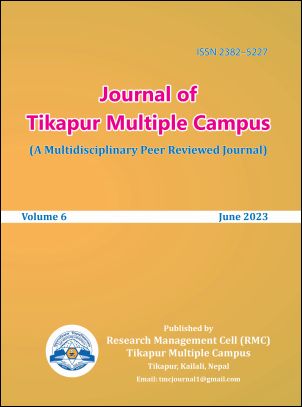Impact of Value-Added Tax on Revenue Generation in Nepal: An ARDL Approach
DOI:
https://doi.org/10.3126/jotmc.v6i01.56300Keywords:
error correction model, autoregressive distributed lag, unit root, cointegrationAbstract
This paper aims to identify the impact of VAT on revenue generation in Nepal using a quantitative method. Testing the unit root of the series is the first step in determining whether the data are stationary. An Augmented Dicky Fuller unit root test and a co-integration test are employed to check the relationship between the variables under study. This study reveals that LNVAT, LNRCE, LNRIT, LNROT, and LNRNT are significant, which is desirable. As a result, a 1 percent increase in value-added tax leads to a 21.60 percent increase in government tax revenue, while a 1 percent increase in custom excise duty leads to a 39.31 percent increase in tax revenue. Other macroeconomic variables such as LNRIT, LNROT, and LNRNT contribute 15.32 percent, 8.51 percent, and 15.06 percent to government revenue generation. The P-value of the Breusch-Godfrey serial correlation LM test, the Breusch-Pagan-Godfrey heteroscedasticity test, and the normalcy test are greater than 5 percent, which is ideal. As a result, there is no autocorrelation or heteroscedasticity in this model. The residual follows a normal distribution. The diagnostic tests show that the models have the expected econometric features and are structurally sound.
Downloads
Downloads
Published
How to Cite
Issue
Section
License

This work is licensed under a Creative Commons Attribution-NonCommercial 4.0 International License.
This license enables reusers to distribute, remix, adapt, and build upon the material in any medium or format, so long as attribution is given to the creator. The license allows for commercial use.




